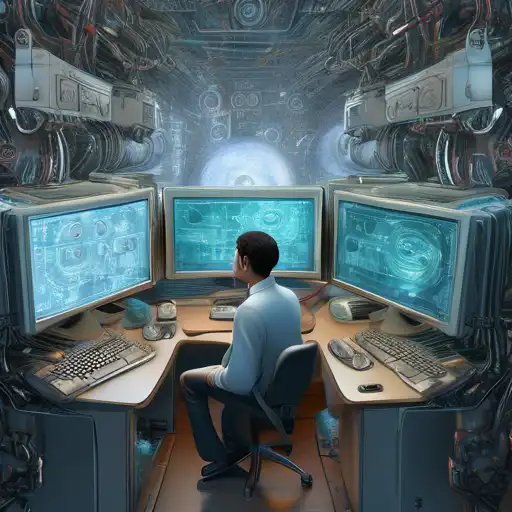Empowering Machines with Sight: The Evolution of Computer Vision
Computer vision is a field of artificial intelligence (AI) that enables machines to interpret and understand the visual world. By leveraging digital images from cameras and videos and deep learning models, machines can accurately identify and classify objects—and then react to what they "see."
The Foundations of Computer Vision
The journey of computer vision began in the 1960s, with the aim to mimic human vision. It involves acquiring, processing, analyzing, and understanding digital images to extract high-dimensional data from the real world in order to produce numerical or symbolic information.
How Computer Vision Works
At its core, computer vision uses pattern recognition techniques to train machines on large datasets of visual data. The process involves several steps:
- Image acquisition
- Pre-processing
- Feature extraction
- Detection/segmentation
- High-level processing
These steps enable the machine to make sense of the visual input, similar to how humans use their eyes and brain to understand their surroundings.
Applications of Computer Vision
Computer vision has a wide range of applications across various industries. Some of the most notable include:
- Healthcare: From diagnosing diseases with medical imaging to assisting in surgeries.
- Automotive: Powering self-driving cars to navigate safely.
- Retail: Enhancing customer experience through cashier-less stores.
- Security: Improving surveillance systems with facial recognition.
These applications demonstrate the transformative potential of computer vision in our daily lives and the broader economy.
Challenges and Future Directions
Despite its advancements, computer vision faces several challenges, such as understanding context and dealing with ambiguous images. However, with the continuous improvement in machine learning algorithms and computational power, the future of computer vision looks promising. Researchers are working towards more sophisticated models that can understand scenes and objects in a way that is closer to human perception.
As we move forward, the integration of computer vision with other AI technologies, such as natural language processing, will open up new possibilities for interactive and intelligent systems.
Conclusion
Computer vision is revolutionizing the way machines interact with the visual world. From healthcare to automotive, its applications are vast and growing. Despite the challenges, the future of computer vision is bright, with endless possibilities for innovation and improvement. As technology advances, we can expect machines to not only see but understand the world in ways we've only begun to imagine.
